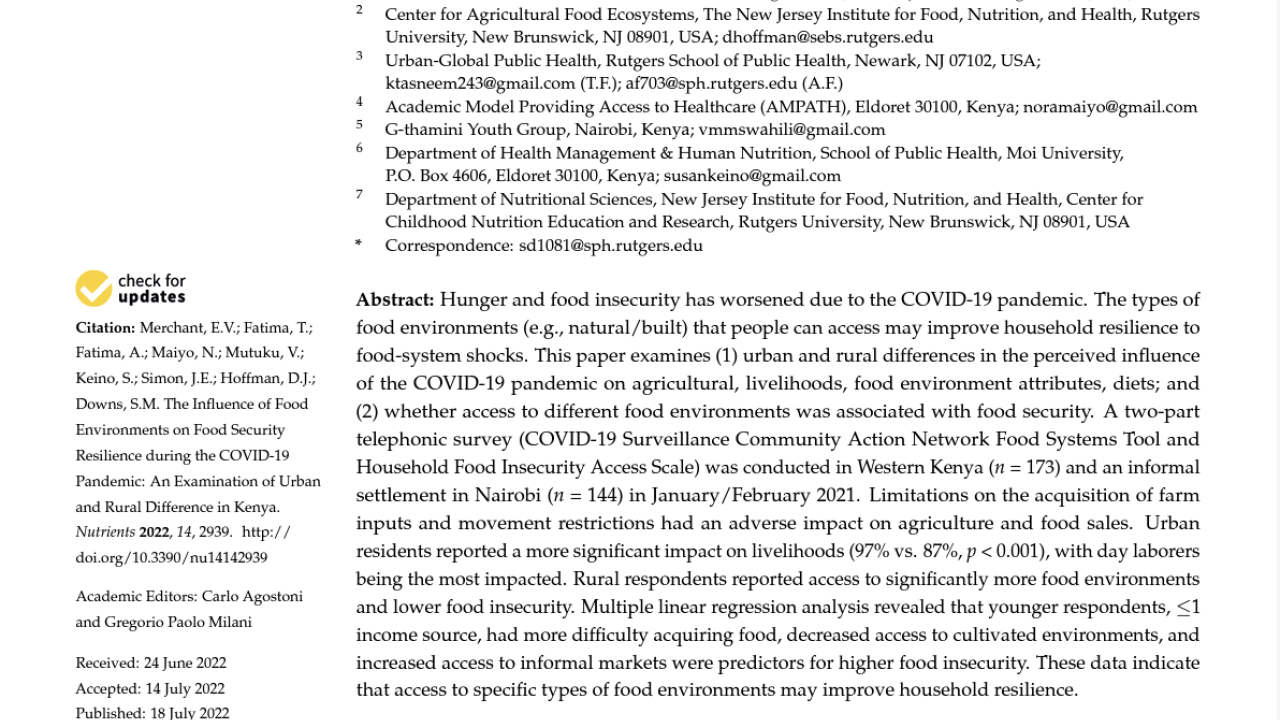
Abstract: Hunger and food insecurity has worsened due to the COVID-19 pandemic. The types of food environments (e.g., natural/built) that people can access may improve household resilience to food-system shocks. This paper examines (1) urban and rural differences in the perceived influence of the COVID-19 pandemic on agricultural, livelihoods, food environment attributes, diets; and (2) whether access to different food environments was associated with food security. A two-part telephonic survey (COVID-19 Surveillance Community Action Network Food Systems Tool and Household Food Insecurity Access Scale) was conducted in Western Kenya (n = 173) and an informal settlement in Nairobi (n = 144) in January/February 2021. Limitations on the acquisition of farm inputs and movement restrictions had an adverse impact on agriculture and food sales. Urban residents reported a more significant impact on livelihoods (97% vs. 87%, p < 0.001), with day laborers being the most impacted. Rural respondents reported access to significantly more food environments and lower food insecurity. Multiple linear regression analysis revealed that younger respondents, 1 income source, had more difficulty acquiring food, decreased access to cultivated environments, and increased access to informal markets were predictors for higher food insecurity. These data indicate that access to specific types of food environments may improve household resilience.
Merchant, E.V.; Fatima, T.; Fatima, A.; Maiyo, N.; Mutuku, V.; Keino, S.; Simon, J.E.; Hoffman, D.J.; Downs, S.M. The Influence of Food Environments on Food Security Resilience during the COVID-19 Pandemic: An Examination of Urban and Rural Difference in Kenya. Nutrients 2022, 14, 2939. http://doi.org/10.3390/nu14142939

